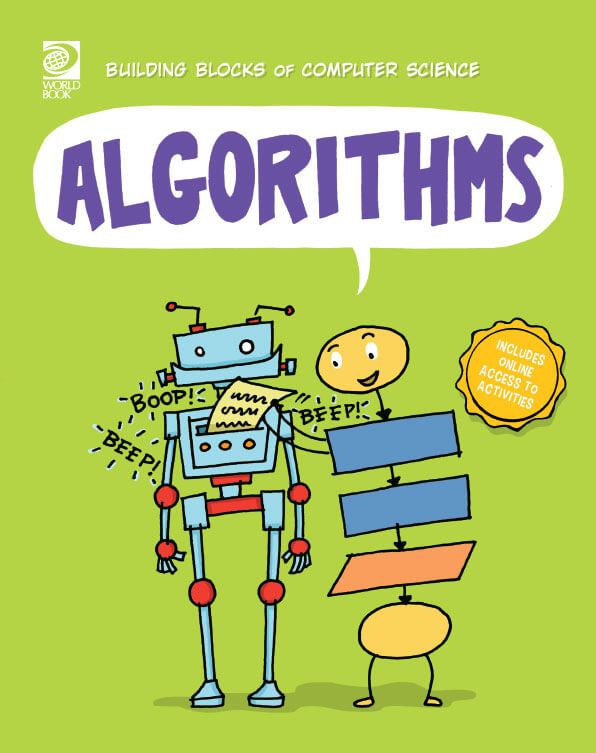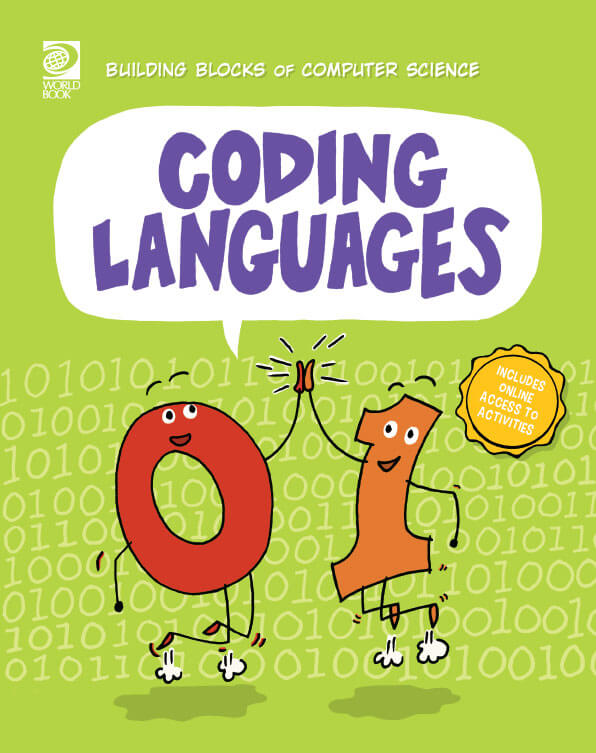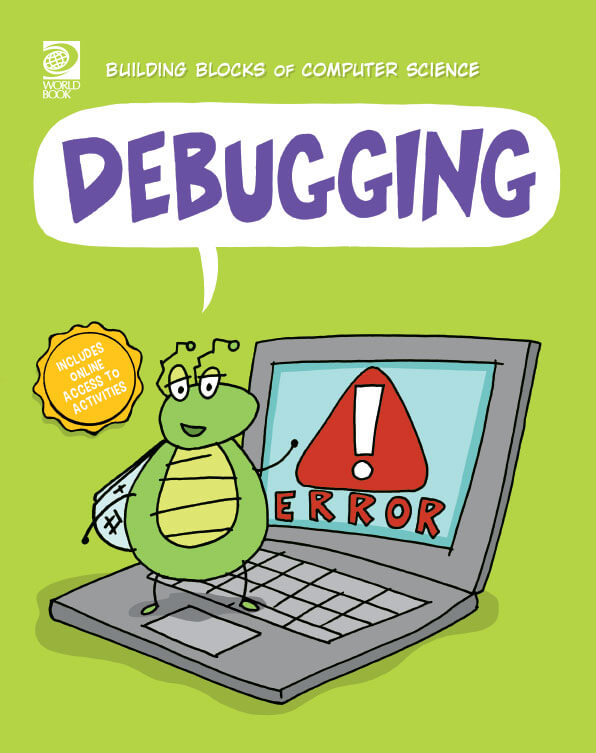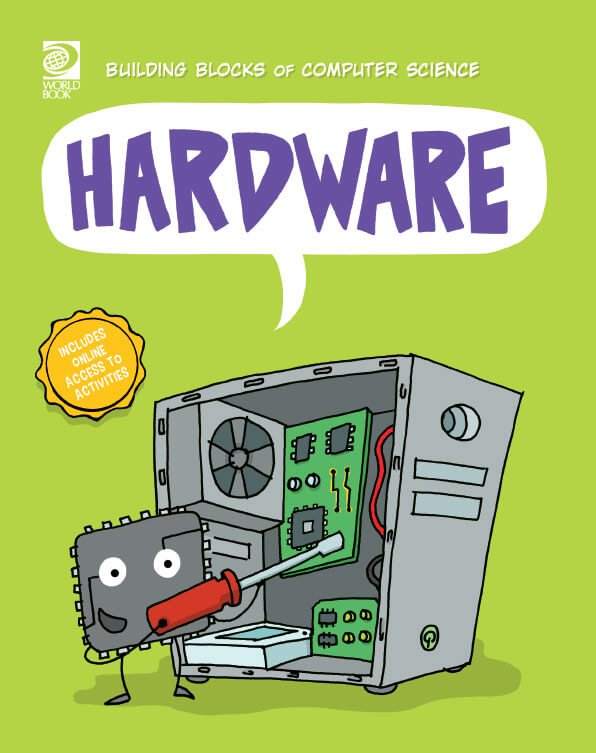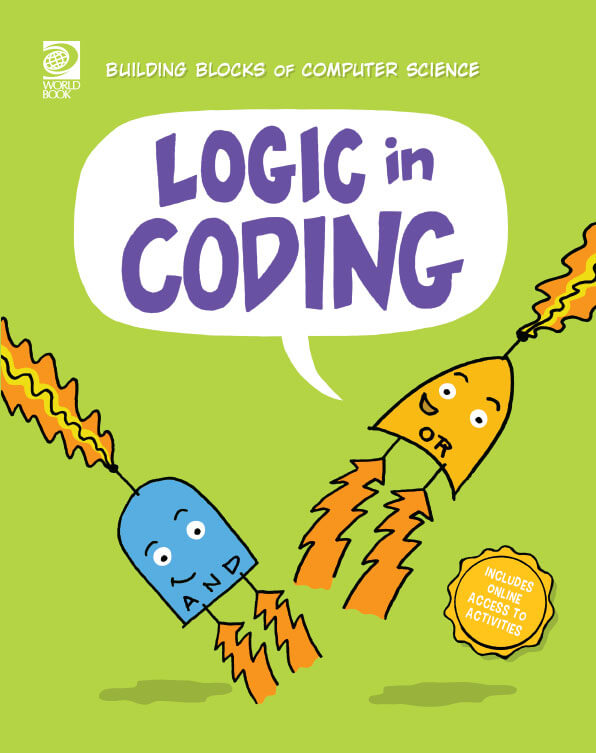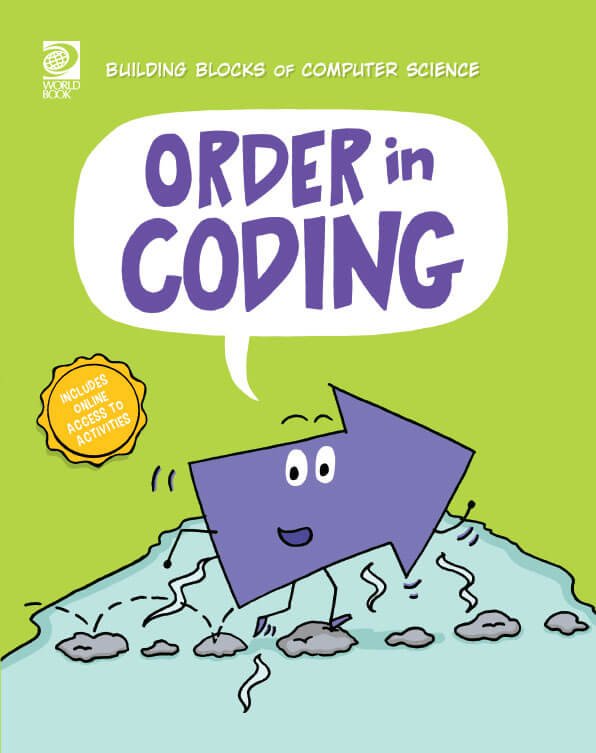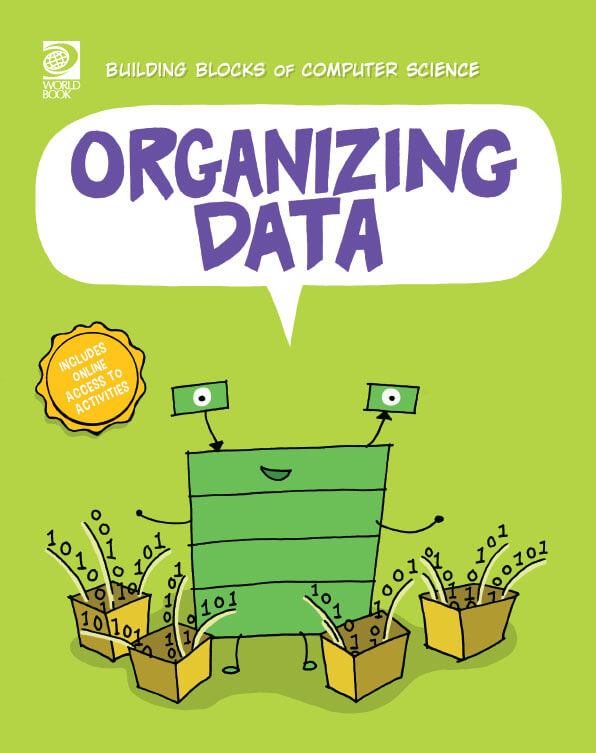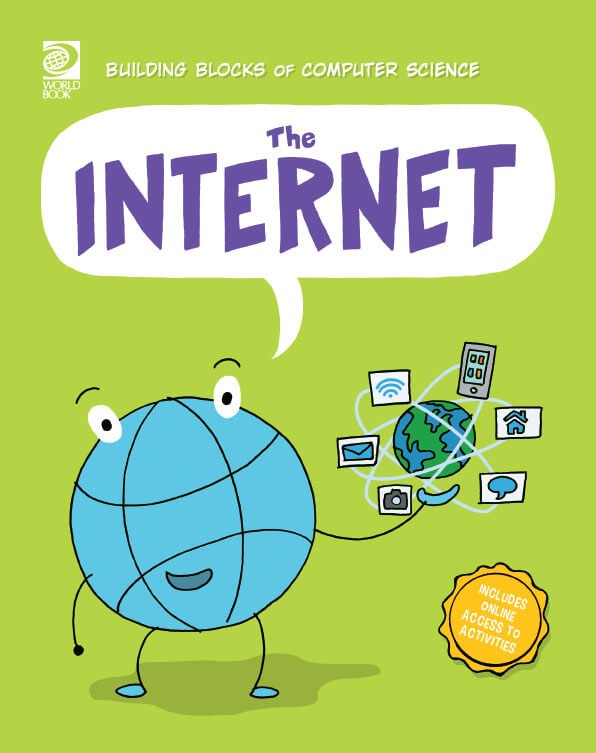Building Blocks of Computer Science
The Building Blocks of Computer Science Educator Section includes tools as well as ready-to-use classroom materials. Educators can see how the Computer Science Teachers Association (CSTA) K-12 Computer Science Standards align with the series, organized by the grade level(s) they teach. In addition, educators will have access to reading resources such as discussion guides and comprehension checks as well as fun classroom activities like vocabulary bingo! The Educator Section will also include engaging lessons, centered around standards, with built-in differentiation options to support all learners as they continue to explore this content.
Building Blocks of Computer Science Standards Alignment
Use this section to view how the Computer Science Teachers Association (CSTA) K-12 Computer Science Standards align to the Building Blocks of Computer Science series.
Computer Science Teachers Association K-12 Computer Science Standards
-
Students in Grades K-2 who demonstrate understanding can:
Standard Learning Outcome Building Blocks Book(s) 1A-CS Computing Systems 1A-CS-01 Select and operate appropriate software to perform a variety of tasks, and recognize that users have different needs and preferences for the technology they use. Hardware, Logic in Coding, Order in Coding, Organizing Data 1A-CS-02 Use appropriate terminology in identifying and describing the function of common physical components of computing systems (hardware). The Internet, Hardware 1A-CS-03 Describe basic hardware and software problems using accurate terminology. Debugging, Hardware 1A-DA Data and Analysis 1A-DA-05 Store, copy, search, retrieve, modify, and delete information using a computing device and define the information stored as data. The Internet, Hardware, Organizing Data 1A-AP Algorithms and Programming 1A-AP-08 Model daily processes by creating and following algorithms (sets of step-by-step instructions) to complete tasks. Algorithms, Logic in Coding 1A-AP-09 Model the way programs store and manipulate data by using numbers or other symbols to represent information. The Internet, Algorithms, Coding Languages, Hardware, Logic in Coding, Organizing Data 1A-AP-10 Develop programs with sequences and simple loops, to express ideas or address a problem. Algorithms, Coding Languages, Logic in Coding 1A-AP-11 Decompose (break down) the steps needed to solve a problem into a precise sequence of instructions. Algorithms 1A-AP-14 Debug (identify and fix) errors in an algorithm or program that includes sequences and simple loops. Debugging 1A-AP-15 Using correct terminology, describe steps taken and choices made during the iterative process of program development. Algorithms, Logic in Coding, Order in Coding, Organizing Data 1A-IC Impacts of Computing 1A-IC-16 Compare how people live and work before and after the implementation or adoption of new computing technology. The Internet, Coding Languages, Hardware -
Students in Grades 3-5 who demonstrate understanding can:
Standard Learning Outcome Building Blocks Book(s) 1B-CS Computing Systems 1B-CS-01 Describe how internal and external parts of computing devices function to form a system. The Internet, Hardware 1B-CS-02 Model how computer hardware and software work together as a system to accomplish tasks. The Internet, Hardware 1B-CS-03 Determine potential solutions to solve simple hardware and software problems using common troubleshooting strategies. Debugging, Hardware 1B-NI Networks and the Internet 1B-NI-04 Model how information is broken down into smaller pieces, transmitted as packets through multiple devices over networks and the Internet, and reassembled at the destination. The Internet 1B-DA Data and Analysis 1B-DA-06 Organize and present collected data visually to highlight relationships and support a claim. Organizing Data 1A-AP Algorithms and Programming 1B-AP-08 Compare and refine multiple algorithms for the same task and determine which is the most appropriate. Algorithms, Order in Coding, Logic in Coding 1B-AP-09 Create programs that use variables to store and modify data. Coding Languages, Logic in Coding, Organizing Data 1B-AP-10 Create programs that include sequences, events, loops, and conditionals. Algorithms, Coding Languages, Logic in Coding 1B-AP-11 Decompose (break down) problems into smaller, manageable subproblems to facilitate the program development process. Algorithms 1B-AP-13 Use an iterative process to plan the development of a program by including others' perspectives and considering user preferences. Order in Coding 1B-AP-15 Test and debug (identify and fix errors) a program or algorithm to ensure it runs as intended. Debugging 1B-AP-17 Describe choices made during program development using code comments, presentations, and demonstrations. Logic in Coding, Order in Coding, Organizing Data 1B-IC Impacts of Computing 1B-IC-18 Discuss computing technologies that have changed the world, and express how those technologies influence, and are influenced by, cultural practices. The Internet, Coding Languages, Hardware
Reading Resources
Each book in the Building Blocks of Computer Science series comes with a Discussion Guide as well as a Comprehension Check! Each Discussion Guide includes 10 questions, as well as potential answers, and is intended to be used during or after reading the text to help students better understand the content. Each Comprehension Check also includes 10 questions and comes with an Answer Key. The Comprehension Check is intended to be used after reading and is a great assessment option.
Classroom Activities
These activities are designed for classroom use and can be used in both the small group and/or whole group setting. These activities bring some fun, engagement, and reflection to students’ learning!
Vocabulary Bingo
Play this bingo game with your students to deepen their understanding of key vocabulary words related to the entire Building Blocks of Computer Science series. This can also be used as a fun review game before an assessment.
Hardware Heads Up
Help students dive deeper into the physical components of computers with this review activity and game! Students will describe information related to common and important pieces of hardware, including a physical description, an explanation of its functions, and whether it can be classified as internal or external hardware.
Lesson Plans
World Book has created lesson plans that can be used to help deepen students’ understanding of the Building Blocks of Computer Science concepts. These full lesson plans are aligned to standards, include assessment options, describe possible differentiation considerations, and include a variety of ways for students to stay engaged in their learning. Many materials are included as quick and easy downloads for your convenience.
Writing Pseudocode Algorithms
This engaging lesson combines elements of computer science with procedural writing and editing skills to help students understand the importance of efficiency and clarity when coding. Get ready to be a little goofy as you follow students’ algorithms for making the best peanut butter and jelly sandwich ever!
Graphing Colorful Candies
This cross-curricular lesson is designed for students in grades 2-3 and includes a tasty treat! Students will make connections between data analysis in computer science and data analysis in math by collecting, presenting, and interpreting data about the color of your favorite candy-coated chocolates.
Computer Science Timelines
In this lesson, students will collaborate with their peers to construct a timeline of major events related to the development of computers and the study of computer science. Students will then analyze their timelines, discussing dates that stood out, trends in technology development, and anything that surprised them. This lesson also provides an opportunity for independent written reflection, which can be used as a form of assessment.
